#canon EOS 5DS lenses
Explore tagged Tumblr posts
Text
An Unfinished Local MacMansion As If In A Classical Painting, Photographed With Our Canon EOS 5D Mark II & A Vintage Lens

View On WordPress
#@DxOLabs#Canon EOS 5D Mark II#DxO#Leeming LUT Pro#M42-mount lenses#Panagor PMC 28mm f/2.8 Auto#Paul Leeming#Sir Brian Bell#vintage cameras#vintage lenses
0 notes
Text

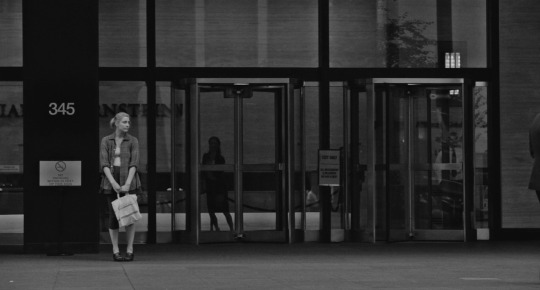




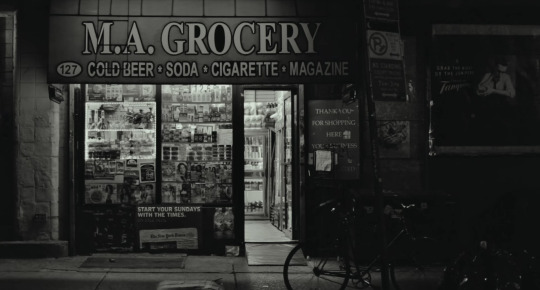
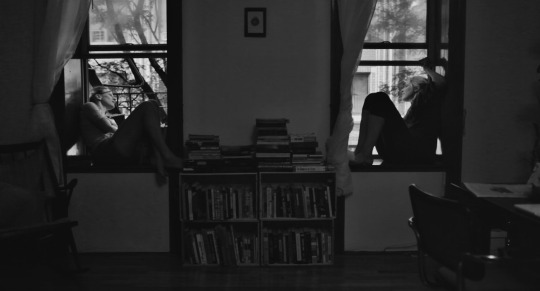

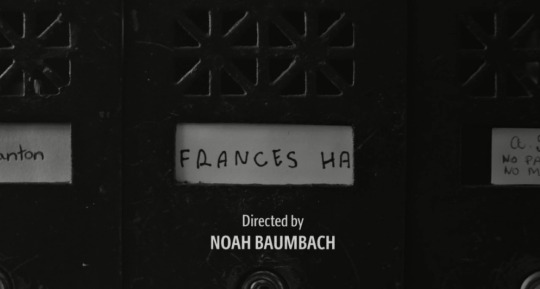
Frances Ha (2012)
Director: Noah Baumbach
Cinematographer: Sam Levy
Tech Specs: — Aspect Ratio: 1.85:1 — Cameras: Canon EOS 5D Mark II, Canon L-Series Lenses — Negative Format: Video (HD) — Cinematographic Process: Canon H264(1080p/24, source format)
63 notes
·
View notes
Text
Best DSLR Cameras for Professional & Beginner Photographers
If you're serious approximately images, investing in a incredible DSLR camera can extensively enhance your competencies and image great. DSLR cameras provide versatility, higher picture sensors, interchangeable lenses, and manual manipulate over settings. Whether you're a newbie or a professional, there may be a DSLR camera that suits your needs. In this guide, we will discover some of the great DSLR cameras to be had today, thinking about elements like performance, functions, and rate.
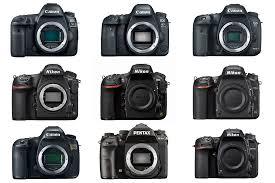
Best budget DSLR cameras for photography enthusiasts
1. Canon EOS 5D Mark IV
Why Choose It?
The Canon EOS 5D Mark IV is an tremendous choice for expert photographers who call for high resolution, surprising low-light performance, and rapid autofocus.
Key Features:
Sensor: 30.4MP Full-Frame CMOS Sensor
Autofocus: Dual Pixel CMOS AF with sixty one-point AF system
ISO Range: 100-32,000 (expandable to 50-102,400)
Burst Shooting: 7 fps
Video: 4K video recording
Connectivity: Built-in Wi-Fi, GPS, NFC
Pros:
✔ High picture resolution and element
✔ Excellent autofocus and occasional-mild overall performance
✔ Great dynamic variety
✔ 4K video functionality
Cons:
✖ Expensive
✖ Heavy body
✖ Crop element in 4K video mode
2. Nikon D850
Why Choose It?
The Nikon D850 is an extremely good all-rounder, offering a excessive-decision sensor, speedy capturing velocity, and brilliant dynamic range, making it best for both landscapes and action photography.
Key Features:
Sensor: forty five.7MP Full-Frame BSI CMOS Sensor
Autofocus: 153-factor AF system
ISO Range: 64-25,six hundred (expandable to 32-102,four hundred)
Burst Shooting: 9 fps
Video: 4K UHD recording at 30 fps
Connectivity: Bluetooth and Wi-Fi
Pros:
✔ Exceptional picture satisfactory and sharpness
✔ Long battery life
✔ Fast and accurate autofocus
✔ High ISO overall performance
Cons:
✖ No built-in flash
✖ Large and heavy
✖ High price tag
3. Canon EOS 90D
Why Choose It?
For those who want a flexible APS-C DSLR with high-pace overall performance, the Canon EOS 90D is a first rate choice, mainly for flora and fauna and sports activities images.
For those who want a flexible APS-C DSLR with high-pace overall performance, the Canon EOS 90D is a first rate choice, mainly for flora and fauna and sports activities images.
Key Features:
Sensor: 32.5MP APS-C CMOS Sensor
Autofocus: 45-factor all-go-type AF machine
ISO Range: one hundred-25,600
Burst Shooting: 10 fps
Video: 4K UHD without crop
Connectivity: Wi-Fi and Bluetooth
Pros:
✔ Excellent decision for an APS-C sensor
✔ Fast and reliable autofocus
✔ Great battery life
✔ Uncropped 4K video recording
Cons:
✖ No in-frame stabilization
✖ Limited dynamic range in comparison to full-frame cameras
four. Nikon D7500
Why Choose It?
The Nikon D7500 is a first-rate mid-range DSLR with superb photo pleasant, proper autofocus, and sturdy battery life, making it ideal for lovers.
Key Features:
Sensor: 20.9MP APS-C CMOS Sensor
Autofocus: fifty one-factor AF system
ISO Range: one hundred-51,2 hundred (expandable to 50-1,640,000)
Burst Shooting: eight fps
Video: 4K UHD at 30 fps
Connectivity: Wi-Fi and Bluetooth
Pros:
✔ Great low-light overall performance
✔ Fast and accurate autofocus
✔ Lightweight for a DSLR
✔ Good battery life
Cons:
✖ Only one SD card slot
✖ No vertical grip choice
five. Canon EOS Rebel T8i (850D)
Why Choose It?
For beginners looking for an affordable but characteristic-packed DSLR, the Canon EOS Rebel T8i is an extremely good entry-stage choice.
Key Features:
Sensor: 24.1MP APS-C CMOS Sensor
Autofocus: 45-factor all-cross-kind AF machine
ISO Range: one hundred-25,600
Burst Shooting: 7 fps
Video: 4K at 24 fps
Connectivity: Wi-Fi and Bluetooth
Pros:
✔ Affordable fee
✔ Easy-to-use controls
✔ Good autofocus for an access-degree DSLR
✔ Vari-attitude touchscreen
Cons:
✖ Limited dynamic range
✖ No in-frame stabilization
✖ Slow burst price in comparison to higher-quit models
6. Pentax K-1 Mark II
Why Choose It?
The Pentax K-1 Mark II is a unique full-frame DSLR that gives climate-sealed construction and built-in stabilization, making it ideal for out of doors photographers.
Key Features:
Sensor: 36.4MP Full-Frame CMOS Sensor
Autofocus: 33-point SAFOX 12 AF system
ISO Range: a hundred-819,2 hundred
Burst Shooting: four.Four fps
Video: Full HD 1080p at 30 fps
Connectivity: Wi-Fi and GPS
Pros:
✔ Excellent build nice with climate sealing
✔ In-body stabilization (uncommon for DSLRs)
✔ High ISO variety for low-mild images
✔ Unique AstroTracer function for night time sky pictures
Cons:
✖ Slower autofocus as compared to competitors
✖ Limited lens selection
✖ Lower video satisfactory than competitors
Choosing the Right DSLR for Your Needs
For Professionals: Canon EOS 5D Mark IV or Nikon D850 are first-rate picks.
For Enthusiasts: Nikon D7500 or Canon EOS 90D gives first rate balance in charge and capabilities.
For Beginners: Canon EOS Rebel T8i is a splendid entry-level digital camera.
For Outdoor and Adventure Photography: Pentax K-1 Mark II with its rugged frame and stabilization is good.
3 notes
·
View notes
Note
Hey Micheal what camera would you reccomend to some one starting out taking photos & what’s your set up?
Hey!
I'm a firm believer in buying an inexpensive DSLR or mirrorless setup with interchangeable lenses. You don't have to break the bank on a starter setup — just focus on buying a camera with a robust selection of first- and third-party lenses.
My usual advice is to start simple and only upgrade gear once you run into a physical or technical limitation that stops you from realizing your vision. For example, if you're not getting the shallow depth of field you want with your current lens and body, then maybe it's time to consider buying a lens with a larger maximum aperture (e.g., f/1.8 or f/1.4).
I started out with a Nikon D50 and a Nikkor 50mm f/1.8. That served me well for nearly five years, before I started running into technical limitations with the sensor that made shooting night photos difficult. That's when I switched to shooting medium format film for a spell, before ultimately settling on a full-frame Canon digital body. All-in-all, that experimentation period took about 17 years (I'm still not done).
That said, shop used for your first camera. Places like KEH or MPB have a great selection of tested and used gear. I personally shop from MPB. Here are a few great beginner full-frame camera bodies. I'll break out lenses later on in this post.
Why full frame? I think you get superior image quality, better depth of field, better image resolution for printing, and phenomenal dynamic range.
Canon EOS 5D Mark III ($714)
Nikon D750 ($774)
Canon 6D Mark II ($884)
Nikon D810 ($819)
Anyone of these are going to get the job done and then some.
The world of lenses is complicated and varied. You'll have “prime purists” that will tell you to eschew zoom lenses and only shoot prime (a lens with no zoom capabilities). You'll have people that say longer telephotos are all you need. The truth is, you'll find your niche the more you shoot. I prefer prime lenses for their simplicity (and the less I have to think about, the better).
I'll break these out by purpose.
Portraiture
Canon EF 85mm f/1.8 ($259)
Canon EF 50mm f/1.8 ($134)
Nikkor 85mm f/1.8 ($184)
Nikkor 50mm f/1.8 ($78)
Landscapes
Canon EF 24mm f/2.8 IS ($294)
Nikkor AF 24mm f/2.8 ($134)
Multipurpose
Canon EF-S 18-55mm f/3.5-f/5.6 IS STM ($54)
Nikon AF-P DX Nikkor 18-55mm f/3.5-5.6G ($73)
I could go on and on, but this is enough to get you a start in the right direction.
If I were to put together a beginner kit with the above options, I would snatch up the Canon 5D Mark III with the Canon 50mm f/1.8 and the Canon EF 24mm f/2.8 IS. Total cost before taxes and shipping would be $1,142. You would have an incredibly flexible kit that lends itself to portraiture, landscapes, and street work, all for the same price as a new “prosumer” kit with only one lens from Amazon or other big box stores. If you don't know which direction you want to go, or you want to save on cost, there's nothing wrong with swapping out the two primes and grabbing the 18-55mm kit lens for next to nothing. That will at least let you dabble with different focal lengths and see what suits you.
I'm happy to answer any other questions here!
P.S. I shoot with a Canon EOS 6D Mark I and usually have a Sigma 35mm f/1.4 lens mounted on it for street portrait/street landscape work. My other carry-around camera is a Ricoh GR III.
10 notes
·
View notes
Text
Buy Camera Online in Nepal | Buy Camera Accessories Online in Nepal
In the age of digital transformation, the convenience of online shopping has revolutionized the way we purchase electronics, including cameras and their accessories. Whether you're a professional photographer, an amateur enthusiast, or simply someone who loves capturing moments, Buy Camera online in Nepal offers a plethora of choices and benefits. This comprehensive guide will help you navigate through the options available, ensuring you find the best cameras and accessories to meet your needs.
Why Buy Cameras Online in Nepal?
1. Wide Range of Options: Online platforms provide a vast array of camera brands and models, from DSLRs and mirror less cameras to compact digital cameras. This variety ensures that customers can find products that fit their specific requirements and budgets.
2. Competitive Pricing: Online stores often offer better prices than physical stores due to lower overhead costs. Additionally, customers can take advantage of frequent online discounts, deals, and seasonal sales.
3. Convenience and Time-Saving: Shopping online eliminates the need to travel to multiple stores, saving both time and effort. Products can be easily compared side-by-side, and reviews from other buyers help in making informed decisions.
4. Access to Latest Models: Online retailers frequently update their inventory with the latest camera models and accessories. This ensures that customers have access to the newest technology and features in the market.
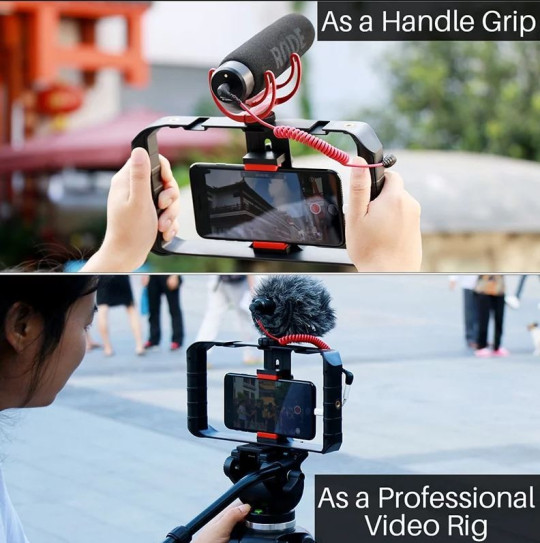
Popular Camera Brands Available Online in Nepal
Canon Cameras
Canon is renowned for its high-quality imaging products. Their range includes everything from entry-level DSLRs like the Canon EOS Rebel series to professional-grade cameras such as the Canon EOS 5D Mark IV. Canon cameras are known for their durability, superior image quality, and extensive lens options.
Nikon Cameras
Nikon is another leading brand, offering a wide selection of cameras that cater to different levels of expertise. From the user-friendly Nikon D3500 to the advanced Nikon Z7 mirrorless camera, Nikon provides excellent performance and reliability.
Sony Cameras
Sony has made a significant impact with its mirrorless camera technology. The Sony Alpha series, particularly the A7 III and A9 models, are popular among professionals for their exceptional autofocus, image stabilization, and compact design.
Fujifilm Cameras
Fujifilm is celebrated for its innovative designs and film simulation modes that produce unique, high-quality images. Models like the Fujifilm X-T4 and X100V offer robust performance and a retro aesthetic that appeals to many photographers.
Buying Camera Accessories Online in Nepal
Buy Camera Accessories Online in Nepal to maximize your photography experience, you need the right accessories. Here's a rundown of essential camera accessories available online:
Lenses
Different lenses serve different purposes. Whether you need a wide-angle lens for landscapes, a telephoto lens for wildlife, or a macro lens for close-up shots, online stores in Nepal offer a wide selection to enhance your photography.
Tripods and Stabilizers
A good tripod is crucial for stability, especially in low-light conditions or for long exposure shots. Brands like Manfrotto, Gitzo, and Joby offer reliable tripods and stabilizers that ensure sharp images and smooth video recording.
Memory Cards
High-capacity and fast memory cards are essential for storing high-resolution images and videos. SanDisk, Lexar, and Samsung are popular brands that provide reliable memory cards in various storage capacities.
Camera Bags
Protect your investment with a sturdy camera bag. Brands like Lowepro, Peak Design, and Think Tank offer bags that are not only durable but also designed for convenience, with ample space and compartments for all your gear.
Batteries and Chargers
Ensure you have extra batteries and a reliable charger, especially for long shoots. Canon, Nikon, and Sony all offer branded batteries and chargers that are compatible with their cameras.
Filters
Filters can greatly enhance your photography by controlling light and reducing glare. Polarizing filters, ND filters, and UV filters from brands like B+W, Hoya, and Tiffen are widely available online.
Flashes and Lighting Equipment
For studio photography or low-light situations, external flashes and lighting equipment are essential. Brands like Godox, Profoto, and Neewer provide high-quality lighting solutions that can be easily purchased online.
Tips for Buying Cameras and Accessories Online
1. Research and Reviews: Read product reviews and ratings from other customers. This provides insight into the performance and reliability of the product.
2. Compare Prices: Check prices across different online platforms to ensure you get the best deal. Don't forget to factor in shipping costs and delivery times.
3. Check Warranty and Return Policies: Ensure that the products come with a warranty and have a flexible return policy in case you encounter any issues.
4. Secure Payment Options: Use secure payment methods to protect your financial information. Look for websites that offer multiple payment options, including COD (Cash on Delivery).
5. Customer Support: Choose online stores that provide robust customer support. This is crucial if you need assistance with your purchase or face any issues with the product.
Conclusion
Buying a camera and its accessories online in Nepal offers unparalleled convenience, variety, and competitive pricing. By following the tips outlined in this guide, you can ensure a smooth and satisfactory shopping experience. Whether you are a seasoned photographer or just starting, the right equipment is just a click away.
0 notes
Text
Exploring the World of Photography and Beyond
In today's fast-paced world, where every moment seems to be fleeting, capturing memories has become more than just a pastime—it's an art form. From the mesmerizing landscapes to the candid expressions of loved ones, Action Camera Flashlight has become the tool of choice for many. Professional Headshot Examples But photography isn't just about clicking a button; it's about storytelling, expression, and creativity. In this comprehensive guide, we delve into the fascinating realm of photography, covering everything from equipment and techniques to inspiration and innovation.
Capturing Moments: The Essence of Photography
Photography is more than just pointing and shooting—it's about freezing moments in time, preserving memories, and immortalizing emotions. Whether it's a breathtaking sunset, a playful expression, or a bustling cityscape, photographs have the power to evoke feelings and transport us to different worlds. With the right tools and techniques, anyone can become a master storyteller through the lens of a camera.
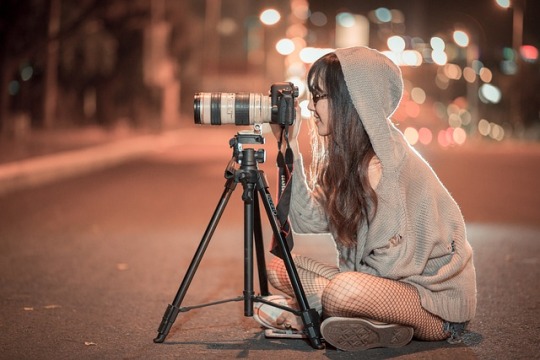
Choosing the Right Tools: From Cameras to Accessories
The journey of a photographer begins with selecting the right equipment. From compact point-and-shoots to high-end DSLRs, the market offers a plethora of options to suit every need and budget. Nikon Coolpix P530 is a versatile choice for beginners, offering a balance between affordability and performance. For those seeking professional-grade results, investing in a DSLR like the Canon EOS 5D Mark IV can elevate your craft to new heights.
In addition to cameras, accessories play a crucial role in enhancing the photography experience. Action Camera Flashlight is an essential tool for low-light conditions, providing ample illumination for night photography or indoor shoots. Investing in quality lenses, tripods, and filters can further expand your creative possibilities and ensure impeccable results.
Mastering the Art: Techniques and Tips
While owning top-of-the-line equipment is important, true mastery of photography lies in understanding the fundamental principles and techniques. Whether you're a novice or a seasoned pro, there's always room for improvement and experimentation. Here are some essential tips to help you elevate your photography game:
Understand Composition: Learn about the rule of thirds, leading lines, and framing to create visually appealing compositions.
Master Exposure: Experiment with aperture, shutter speed, and ISO to achieve the perfect balance of light and shadow in your images.
Harness Natural Light: Embrace the beauty of natural light and learn to manipulate it to your advantage.
Explore Post-Processing: Discover the power of photo editing software like Adobe Photoshop and Lightroom to enhance your images and unleash your creativity.
Finding Inspiration: From Everyday Moments to Extraordinary Scenes
Photography is not just about technical skills; it's also about having a keen eye for beauty and storytelling. Inspiration can be found everywhere, from the mundane details of everyday life to the awe-inspiring wonders of nature. Whether you're capturing the vibrant chaos of a bustling city or the serene tranquility of a secluded forest, every scene has a story waiting to be told.
Beyond Photography: Exploring Related Fields
While photography may be your primary passion, there are numerous related fields and specialties to explore. From photo printing software and ecommerce product photo editing to professional headshot pricing and family photography ideas, the possibilities are endless. Whether you're interested in commercial photography, portrait photography, or fine art photography, there's a niche waiting for you to explore.
Conclusion: Embracing the Journey of Visual Exploration
In conclusion, photography is a multifaceted art form that transcends mere images—it's a journey of self-expression, discovery, and storytelling. Whether you're capturing cherished memories with loved ones or embarking on a quest for artistic excellence, the world of photography offers endless opportunities for growth and creativity. So grab your camera, unleash your imagination, and embark on a visual adventure like never before.
As you delve deeper into the realm of photography, remember to stay curious, keep experimenting, and never stop learning. The world is your canvas, and your lens is the brush—so go forth and capture the magic of life one frame at a time.
0 notes
Text
The Ultimate Professional Photography Equipment List
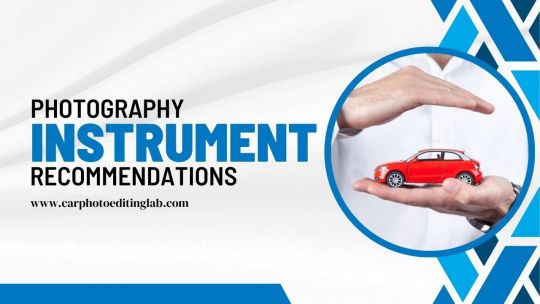
In the world of photography, equipment plays a pivotal role in capturing the perfect shot. Whether you're a seasoned professional or an aspiring enthusiast, having the right gear can make all the difference in achieving stunning results. From cameras to lenses, lighting to accessories, the options can seem overwhelming. That's why we've compiled the ultimate professional photography equipment list to guide you through the essentials of what you need to take your photography to the next level.
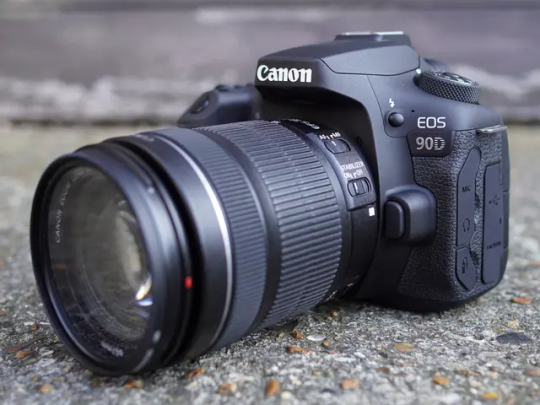
Cameras
DSLR Cameras Digital Single Lens Reflex cameras remain indispensable tools for professional photographers due to their versatility and exceptional image quality. They offer versatility, high image quality, and interchangeable lenses. Popular models include Canon EOS 5D Mark IV and Nikon D850.
Mirrorless Cameras: These compact and lightweight cameras offer similar image quality to DSLRs but without the bulky size. Sony Alpha series and Fujifilm X-T4 are renowned for their performance and portability.
Medium Format Cameras: Ideal for studio and landscape photography, medium format cameras like the Phase One XF IQ4 deliver exceptional detail and resolution, making them a favorite among commercial photographers.
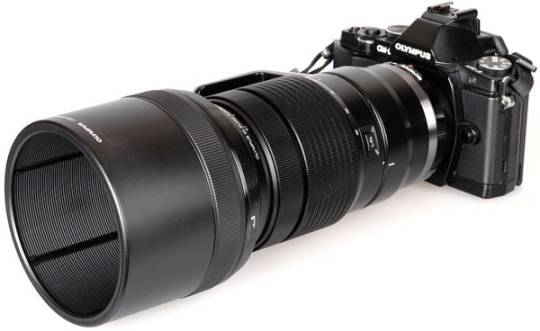
Lenses
Prime Lenses: Known for their sharpness and wide aperture, prime lenses like the Canon EF 50mm f/1.2L and Nikon AF-S NIKKOR 85mm f/1.4G are perfect for portraits, low-light situations, and achieving beautiful bokeh.
Zoom Lenses: Offering versatility, zoom lenses like the Canon EF 24-70mm f/2.8L II and Sony FE 70-200mm f/2.8 GM are great for capturing a variety of subjects, from landscapes to events, with minimal lens changes.
Macro Lenses: Designed for close-up photography, macro lenses such as the Nikon AF-S VR Micro-NIKKOR 105mm f/2.8G are essential for capturing intricate details and capturing stunning images of small subjects like flowers and insects.
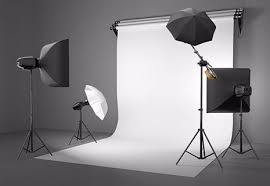
Lighting
Speedlights: Portable and versatile, speedlights like the Nikon SB-5000 and Canon Speedlite 600EX II-RT provide on-camera and off-camera lighting solutions for various shooting conditions.
Studio Strobes: For professional studio setups, studio strobes such as the Profoto D2 and Godox AD600Pro offer consistent and powerful lighting for studio portraits, product photography, and fashion shoots.
Modifiers: Light modifiers like softboxes, umbrellas, and reflectors help control and shape light to achieve desired lighting effects, such as softening shadows or creating dramatic highlights.
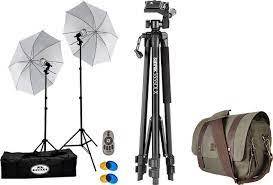
Accessories
Tripods: Essential for achieving stability and sharpness, tripods such as the Manfrotto MT055XPRO3 and Vanguard Alta Pro 263AB provide a sturdy base for long exposures, landscape photography, and self-portraits.
Camera Bags: Protect your gear while on the go with durable and functional camera bags like the Peak Design Everyday Backpack and Lowepro ProTactic series, featuring customizable compartments and weather-resistant materials.
Memory Cards: Invest in high-speed and reliable memory cards like SanDisk Extreme Pro and Lexar Professional to ensure fast write speeds and ample storage for high-resolution images and 4K video recording.
Filters: Enhance your photography with filters such as polarizers, ND filters, and graduated neutral density filters to control reflections, reduce glare, and balance exposure in challenging lighting conditions.
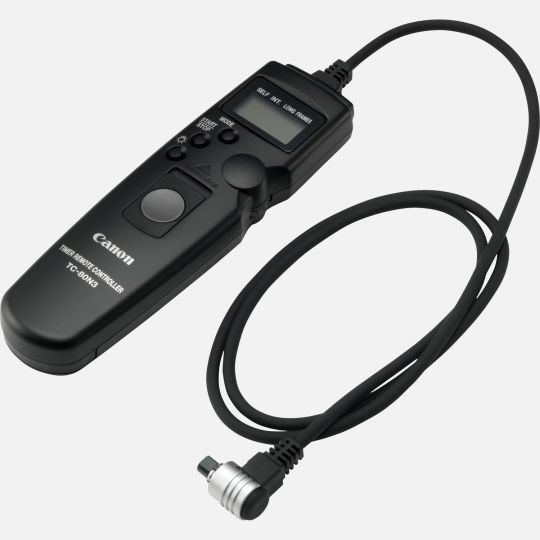
Post-Processing Tools
Editing Software: Adobe Photoshop and Lightroom are industry-standard software for editing and retouching images, offering powerful tools for adjusting exposure, color, and composition.
Calibration Tools: Ensure accurate colors and tones with monitor calibration tools like Datacolor SpyderX and X-Rite ColorMunki, essential for maintaining consistency across different devices and print outputs.
Storage Solutions: Back up and organize your digital assets with reliable storage solutions such as external hard drives, NAS (Network Attached Storage), and cloud storage services like Dropbox and Google Drive.
Conclusion
Building a comprehensive photography kit involves careful consideration of your artistic vision, shooting style, and budget. While the options may seem endless, investing in quality equipment that suits your needs can significantly enhance your photography experience and the quality of your work. Whether you're capturing breathtaking landscapes, timeless portraits, or compelling commercial imagery, having the right tools at your disposal is essential for achieving your creative vision. So, equip yourself with the essentials from our professional photography equipment list and embark on a journey of endless possibilities in the world of photography.
0 notes
Text
Which is the Best DSLR Camera for Wedding Photography?
Choosing the best camera for wedding photography depends on various factors including budget, personal preference, and specific needs. However, some cameras are highly regarded by wedding photographers for their performance, features, and reliability. Here are a few options:
Canon EOS 5D Mark IV: This camera is a favorite among wedding photographers for its excellent image quality, fast and accurate autofocus system, and robust build quality. It also offers dual card slots for backup storage and a versatile range of Canon EF lenses.
Nikon D850: Renowned for its high-resolution sensor, outstanding dynamic range, and impressive autofocus system, the Nikon D850 is a top choice for wedding photographers who prioritize image quality and detail. Destination Wedding Photographer near Shimla best wedding photographer chandigarh best wedding photographers panchkula photographer in delhi for wedding best wedding photographers in chandigarh
Sony Alpha a7R IV: Sony’s full-frame mirrorless cameras have gained popularity among wedding photographers for their compact size, excellent low-light performance, and advanced autofocus capabilities. The a7R IV, with its high-resolution sensor and fast burst shooting, is particularly well-suited for capturing detailed wedding images.
Nikon Z7 II: Another strong contender in the mirrorless category, the Nikon Z7 II offers high-resolution imagery, fast continuous shooting speeds, and a wide selection of compatible lenses. Its in-body image stabilization system is also beneficial for capturing sharp images in various shooting conditions.
Sony Alpha a9 II: For wedding photographers who prioritize speed and reliability, the Sony a9 II is an excellent choice. With its blazing-fast autofocus system, blackout-free continuous shooting, and impressive battery life, it excels in capturing fast-paced wedding moments with precision.
Canon EOS R5: Canon’s flagship mirrorless camera, the EOS R5, boasts impressive features such as 8K video recording, high-resolution stills, and advanced autofocus capabilities. Its ergonomic design and compatibility with Canon RF lenses make it a versatile option for wedding photography.
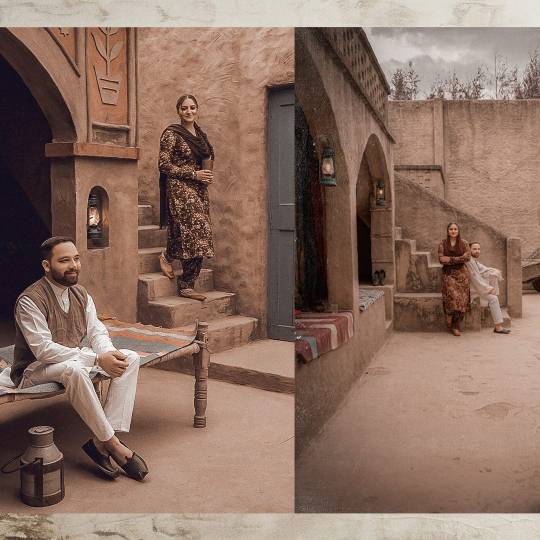
Remember that the camera body is just one part of the equation. Invest in high-quality lenses, lighting equipment, and accessories to complement your camera choice and enhance your wedding photography results. Additionally, it’s essential to practice and familiarize yourself with your chosen camera to maximize its potential on the wedding day.
For more information you can contact We Click Stories. DM us on Instagram.
#best wedding photographer chandigarh#best wedding photographer panchkula#best wedding photographers chandigarh#bride#best destination wedding photographer#weddingphotography#wedding planner#destination wedding photographer#best wedding photographer delhi#wedding photographer chandigarh
0 notes
Text
Canon R-series - R6 first thoughts
My first serious camera was a Canon EOS Rebel 1000D. I learned the basics of photography with the kit lens, and eventually had a small collection of middle-ish lenses. When I decided to upgrade my camera, I got the Canon EOS 5D MKII, which, for many years, was my only full-frame digital camera. It has always proved to be an able performer. However, when I started getting into micro four thirds…
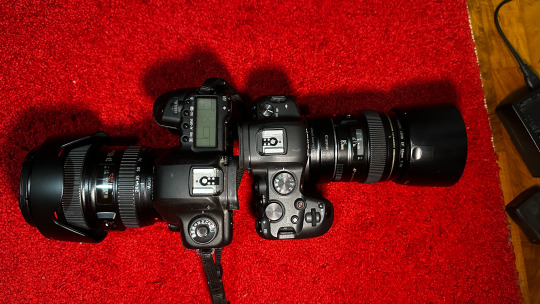
View On WordPress
1 note
·
View note
Text
Product Review: High-Power 500mm/1000mm f/8 Manual Telephoto Lens for Canon EOS Cameras
Brand: Big Mike's Rating: 4.0 out of 5 stars Number of ratings:
Overall Impression: This telephoto lens receives a positive rating from customers, with an average score of 4.0 out of 5 stars from over 2,100 reviews. This suggests that the majority of customers are satisfied with the product's performance and value.
Key Points:
Pros:
Affordable price: Compared to other telephoto lenses on the market, this lens offers a high zoom range at a significantly lower price point.
Good image quality: Customers report that the lens produces sharp images, especially when used in good lighting conditions.
Lightweight and portable: The lens is relatively lightweight and compact, making it easy to carry and use on outings.
Compatible with various Canon EOS cameras: The lens is compatible with a wide range of Canon EOS cameras, including popular models like the Rebel T series, 80D, 90D, and 5D models.
Cons:
Manual focus: The lens requires manual focusing, which can be challenging for beginners and in low-light conditions.
f/8 aperture: The fixed f/8 aperture limits the amount of light that can enter the lens, making it less suitable for low-light photography.
Build quality: Some customers report that the lens feels less durable than other telephoto lenses.
Who would benefit from this lens?
Check now Amazon
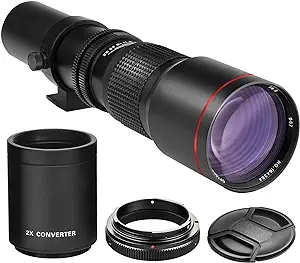
This lens is a good option for:
Budget-conscious photographers: If you're looking for a telephoto lens that won't break the bank, this is a great option.
Travel photographers: The lens's lightweight and portable design makes it ideal for travel photography.
Photographers who want to get started with telephoto photography: The affordable price and easy-to-use design make this lens a good choice for beginners who want to experiment with telephoto photography.
#CameraLens #Technology #PhotographicEquipment #Headphones #Camera
0 notes
Text
Time-Lapse Photography: Cameras, Duration, and Best Choices
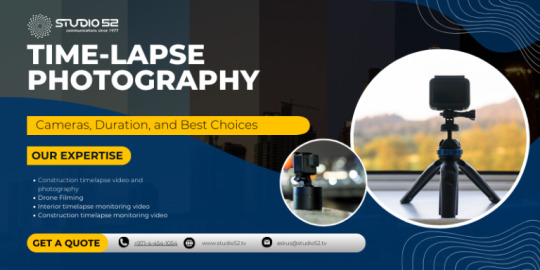
Time-lapse photography is a captivating art that allows us to condense hours, days, or even years into a few seconds of mesmerizing visuals. It’s a technique that has gained immense popularity in recent years, thanks to the advancements in camera technology and the ease of sharing these stunning creations on social media. In this comprehensive guide, we will delve deeper into the world of time-lapse photography, focusing on the cameras you should consider, the optimal duration for your time-lapses, and the best time-lapse camera to make your time-lapse projects truly stand out.
The Magic of Time-Lapse Photography
Before we delve into the technical aspects, let’s take a moment to understand the enchantment behind time-lapse photography. At its core, time-lapse photography is the art of capturing a series of still images at specific intervals and then playing them back as a sequence. This technique condenses time, revealing subtle movements and transformations that are otherwise imperceptible to the naked eye.
Imagine watching a flower bloom, the clouds dance across the sky, or a bustling cityscape transform from day to night in just a few seconds. Time-lapse photography allows us to witness these beautiful moments in a way that traditional photography or video cannot.
Choosing the Right Camera
Selecting the right camera is the cornerstone of successful time-lapse photography. Your choice of camera will greatly influence the quality and flexibility of your time-lapse projects. Here are some considerations to keep in mind when choosing your camera:
1. DSLR or Mirrorless Cameras
DSLR (Digital Single-Lens Reflex) and mirrorless cameras are the preferred choices among time-lapse enthusiasts. They offer interchangeable lenses, manual settings, and excellent image quality. These cameras allow you to have full control over your shots, enabling you to adjust exposure settings to capture the perfect image. Some top choices in this category include the Canon EOS 5D Mark IV and the Sony Alpha a7 III.
2. Compact Cameras
Compact cameras are more portable and user-friendly, making them a great option for beginners or those who want a more straightforward experience. Despite their smaller size, many compact cameras offer impressive time-lapse capabilities. Models like the Sony Cyber-shot RX100 VII and the Canon PowerShot G7 X Mark III are excellent choices for those on the go.
3. GoPro Action Cameras
For outdoor time-lapses or capturing extreme conditions, GoPro action cameras are unbeatable. They are rugged, waterproof, and can capture stunning 4K time-lapses. The GoPro HERO9 Black, for example, is a great option for adventurers and outdoor enthusiasts.
4. Smartphone Cameras
Don’t underestimate the power of your smartphone. Many modern smartphones offer built-in time-lapse modes that can produce impressive results. Apps like Hyperlapse and Lapse It Pro further enhance your smartphone’s time-lapse capabilities. This accessibility means that anyone with a smartphone has the potential to explore the world of time-lapse photography.
Setting the Duration
The duration of your time-lapse can significantly impact its visual appeal and storytelling. Here are some guidelines to help you determine the ideal duration for your project:
1. Short Time-Lapses (1-10 seconds)
Short time-lapses, typically lasting between 1 to 10 seconds, are ideal for capturing fast-moving subjects. These include scenes like traffic, bustling cityscapes, or waves crashing on the shore. To create a sense of urgency and motion in your time-lapse, use shorter intervals between shots, such as 1-2 seconds.
2. Medium Time-Lapses (10 seconds – 2 minutes)
Medium-length time-lapses are versatile and can capture a wide range of subjects. Shooting at intervals of 2-5 seconds works well for most scenarios, including cloud movements, construction projects, or natural landscapes. This duration provides enough context for viewers to appreciate the subtle changes taking place.
3. Long Time-Lapses (2 minutes or more)
For slower transformations like the blooming of flowers, the changing of seasons, or the transition from day to night, longer time-lapses are the way to go. Shoot at intervals of 5-10 seconds or more to create smooth and captivating sequences. Longer time-lapses allow viewers to witness gradual changes and immerse themselves in the beauty of the unfolding story.
Capture Every Moment with Precision! Hire Us Today for Expert Timelapse Camera Services
Best Practices for Stunning Time-Lapses
Creating breathtaking time-lapses goes beyond just selecting the right camera and setting the duration. To ensure your time-lapse stands out and ranks well among others, here are some best practices to follow:
1. Stable Support
Stability is crucial in��time-lapse photography. Even the slightest camera movement can ruin a sequence. Invest in a sturdy tripod or specialized time-lapse equipment to keep your camera stable throughout the shoot. If you’re shooting in windy conditions or on unstable terrain, consider using sandbags or anchor your tripod to prevent vibrations.
2. Manual Mode
While some cameras offer automatic time-lapse modes, shooting in manual mode is often preferred. Manual mode gives you complete control over exposure settings, including aperture, shutter speed, and ISO. This control allows you to adapt to changing lighting conditions and maintain consistent image quality throughout your time-lapse sequence.
3. Intervalometer
To capture precise intervals between shots, invest in an intervalometer or use your camera’s built-in time-lapse feature. Intervalometers allow you to set the duration between each frame, ensuring that your time-lapse flows smoothly and consistently. Be sure to calculate the interval based on the duration you want to achieve.
4. Post-Processing
Editing is a crucial step in time-lapse photography. Use software like Adobe Premiere Pro or LRTimelapse to enhance colors, remove flicker, and add creative effects. Post-processing can elevate the visual quality of your time-lapse video and help you achieve a polished and professional look.
5. Storytelling
While technical aspects are important, remember the storytelling element in your time-lapse. Think about the story you want to tell and the emotions you want to evoke in your audience. A compelling narrative can elevate your work and engage your viewers on a deeper level.
Conclusion
Time-lapse photography is a captivating art form that requires creativity, patience, and the right equipment. By carefully choosing your camera, setting the duration effectively, and following best practices, you can create stunning time-lapse sequences that captivate viewers and stand out in the world of online content. So, pick up your camera, experiment with different subjects and durations, and embark on a journey to capture the passage of time like never before. Your next viral time-lapse masterpiece might just be a click away, waiting to amaze and inspire audiences around the world.
FAQ
Q: What is time-lapse photography?
A: Time-lapse photography is a technique of capturing a series of still images at specific intervals and then playing them back as a sequence, creating a condensed and sped-up video.Q: What is the best camera for time-lapse photography?
A: The best camera for time-lapse photography depends on your needs and budget, but some popular options include DSLRs, mirrorless cameras, compact cameras, GoPro action cameras, and smartphone cameras.Q: How do I set the duration of my time-lapse?
A: The duration of your time-lapse will depend on the subject you are shooting and the effect you want to achieve. Shorter time-lapses are ideal for capturing fast-moving subjects, while longer time lapses are better for slower transformations.Q: What are some best practices for creating stunning time-lapses?
A: Some best practices for creating stunning time-lapses include using stable support, shooting in manual mode, using an intervalometer, and post-processing your footage.Q: How can I use time-lapse photography to tell a story?
A: To use time-lapse photography to tell a story, think about the message you want to convey and the emotions you want to evoke in your audience. Choose a visually appealing subject that will capture the viewer’s attention. Then, use your camera settings and editing techniques to create a time-lapse that is both informative and engaging.
Contact us today at +971-04-454-1054 or mail us at [email protected]
#video production company#video production services#video production company in UAE#video time lapse#construction time lapse camera#timelapse camera#timelapse video production dubai#construction timelapse service#best construction timelapse company#timelapse video camera#time lapse camera#timelapse video#time lapse camera for construction#timelapse camera for construction#construction timelapse camera#time lapse construction camera#construction time-lapse camera#timelapse service in dubai#time lapse video camera#Timelapse Video Service#Timelapse Video Production#Best long term time lapse videos for construction sites#timelapse video production#time lapse company#timelapse videography#time lapse video company#time lapse video services#best timelapse video maker in uae#timelapse production#time lapse studio
0 notes
Text
Taking Our Old Canon EOS 5D Mark II DSLR Out For A Walk With Our Adapted Panagor 28mm F/2.8 Attached
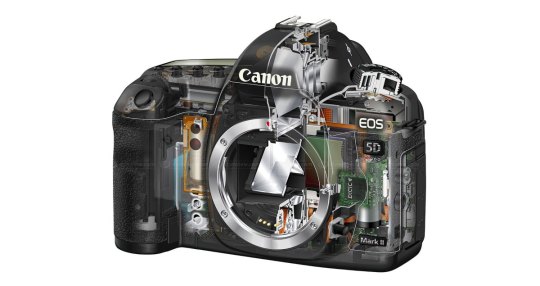
View On WordPress
#adapted lenses#Canon EF 24-105mm f/4.0 L IS USM#Canon EF 24-105mm f/4L IS USM kit zoom lens#Canon EOS 5D Mark II#character lenses#digital single lens reflex cameras#DLRs#kit zoom lenses#Panagor PMC 28mm f/2.8 Auto#Pentacon 50mm f/1.8 MC Auto#quirky lenses#SanDisk Extreme III CompactFlash#storm light#sturmlicht#vintage prime lenses
0 notes
Text
This Old Camera: Canon EOS A2. Very Predictable Of Me.
Um. Oops. Technically this was not supposed to happen but at the same time, it is wholly predictable based on my track record. Have recently been impressed with these SLR era AF Canon EOS lenses out front of a vintage digital full frame EOS body I have grown quite fond of. Canon EOS 5D As good as that camera is it raised a question hailing from that fevered little corner of my brain that…
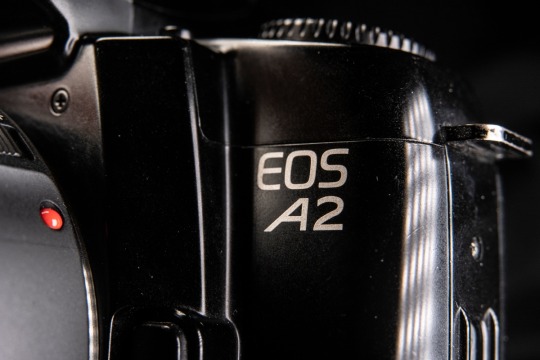
View On WordPress
0 notes
Text
Premium Photography Equipment for Swiss Excursions
Capturing the Beauty of Switzerland Switzerland boasts some of the most stunning scenery in the world. From the snow-capped Alps to the serene lakes and charming towns, there is no shortage of breathtaking landscapes to capture. For photographers looking to capture the beauty of Switzerland, having the right equipment is essential. The Camera The camera is the most important piece of equipment for any photographer. When it comes to capturing the beauty of Switzerland, a high-quality DSLR camera is recommended. A camera with a full-frame sensor, such as the Canon EOS 5D Mark IV or the Nikon D850, will give you the best image quality and allow you to capture more detail in your shots. A wide-angle lens is also a great investment for landscape photography. The Canon EF 16-35mm f/2.8L III USM or the Nikon AF-S NIKKOR 16-35mm f/4G ED VR are both excellent choices. The Tripod When photographing landscapes, a tripod is essential for keeping your camera steady and getting sharp images. The Manfrotto MT055CXPRO4 or the Gitzo GT1545T Series 1 Traveler are both sturdy and lightweight options that are ideal for travel photography. The Filters Filters are another important piece of equipment for landscape photography. A polarizing filter can help reduce glare and make colors more vibrant, while a graduated neutral density filter can help balance the exposure between the sky and the foreground. The Lee Filters Landscape Pro Kit or the Hoya 77mm Digital Filter Kit are both great options. With the right equipment, you can capture the beauty of Switzerland and create stunning images that will last a lifetime. Don't forget to pack extra batteries and memory cards, and always carry your equipment in a sturdy camera bag to protect it from the elements. Cameras for the Ultimate Swiss Experience 1. DSLR Cameras DSLR cameras are an excellent option for capturing stunning landscapes and cityscapes in Switzerland. They allow you to change lenses depending on your need and capture detailed and high-quality images. Some popular options include the Nikon D850 and the Canon EOS 5D Mark IV. 2. Mirrorless Cameras Mirrorless cameras are a more compact and portable option, yet still offer excellent image quality. They are perfect for hiking and outdoor activities due to their lightweight build. The Sony Alpha a7 III and the Fujifilm X-T4 are popular mirrorless camera options. 3. Action Cameras Action cameras are perfect for capturing the adrenaline-fueled activities Switzerland has to offer. They are compact, lightweight, and can withstand extreme weather conditions. The GoPro HERO9 Black and DJI Osmo Action are popular action cameras. 4. Smartphone Cameras Don't underestimate the power of your smartphone camera. With the latest smartphones, you can capture high-quality images with ease. The iPhone 12 Pro Max and Samsung Galaxy S21 Ultra offer exceptional camera quality and features like night mode and 8K video recording. 5. Instant Cameras For a more retro and fun experience, consider bringing an instant camera to capture your Swiss adventure. The Fujifilm Instax Mini 90 and the Polaroid Now are popular instant cameras that allow you to capture and print your memories instantly. Regardless of which camera type you choose, remember to pack extra batteries, memory cards, and a tripod for stable shots. With the right equipment, you can capture stunning photos of Switzerland's natural beauty and vibrant cities. Lenses for Every Scenic Shot When it comes to capturing the beauty of Swiss landscapes, having the right lenses is essential. Here are some of the best lenses to bring on your Swiss excursion: Wide-angle Lens A wide-angle lens is perfect for capturing sweeping vistas of the Swiss Alps and the countryside. Look for a lens with a focal length of 10-24mm, such as the Canon EF-S 10-22mm or the Nikon AF-P DX NIKKOR 10-20mm. These lenses are great for group shots and landscape photography. Telephoto Lens If you want to get up close and personal with the wildlife, a telephoto lens is the way to go. Look for a lens with a focal length of 70-200mm, such as the Sony FE 70-200mm f/4 G OSS or the Canon EF 70-200mm f/4L IS II USM. These lenses are perfect for capturing detailed photos of the Swiss Alps and the wildlife that call them home. Macro Lens If you're interested in capturing the intricate details of Swiss flora and fauna, a macro lens is a must-have. Look for a lens with a focal length of 60-105mm, such as the Nikon AF-S VR Micro-Nikkor 105mm f/2.8G IF-ED or the Canon EF 100mm f/2.8L Macro IS USM. These lenses are perfect for capturing close-up shots of flowers, insects, and other small details. Standard Zoom Lens A standard zoom lens is a versatile option that can be used in a variety of situations. Look for a lens with a focal length of 24-70mm, such as the Tamron SP 24-70mm f/2.8 Di VC USD G2 or the Nikon AF-S NIKKOR 24-70mm f/2.8E ED VR. These lenses are great for everything from landscape photography to portraits. By investing in the right lenses, you can capture stunning photos of the Swiss scenery and wildlife. Whether you're a professional photographer or just starting out, these lenses are a must-have for anyone looking to capture the beauty of Switzerland. Tripods for Stable and Clear Shots To achieve the sharpest and most stable shots, a tripod is necessary for any photographer. A tripod ensures that your camera is kept still, minimizing camera shake and allowing you to maximize image quality. Features to Look for in a Tripod When selecting a tripod, there are a few key features to consider. The first is weight. You want a tripod that is sturdy enough to handle your camera and lenses, but not so heavy that it's cumbersome to carry around. Another important feature is height – look for a tripod that is tall enough to suit your needs. Finally, consider the materials – aluminum is lightweight but not as stable as carbon fiber, while wood tripods offer a unique look but are heavier than other options. Advantages of a Tripod Using a tripod has several advantages beyond just stability. It allows for precise composition, as you can make small adjustments without having to move the camera. It also forces you to slow down and think more intentionally about your shots, leading to higher quality images. Additionally, a tripod can help you achieve longer exposures, which can produce stunning nighttime or motion blur images. Overall, investing in a quality tripod is essential for any serious photographer looking to capture sharp, clear shots. Filters to Enhance Your Images Capturing stunning photographs while on a Swiss excursion requires the right equipment, including filters that can enhance your images. Here are some filters you should consider: Polarizing Filter A polarizing filter reduces glare and eliminates reflections from non-metallic surfaces, such as water, glass, and foliage. This filter helps to saturate colors and deepen blue skies, making landscapes appear more vivid and crisp. Neutral Density Filter A neutral density filter reduces the amount of light entering the lens, allowing for longer exposures and creative effects, such as blurred motion. This filter is useful in bright daylight situations when you want to create a shallow depth of field or capture a flowing waterfall with a blurred effect. Graduated Neutral Density Filter A graduated neutral density filter helps to balance exposure between the sky and foreground in landscape photography. This filter has a darkened portion at the top and a clear portion at the bottom, creating a gradual transition to balance the exposure. Infrared Filter An infrared filter blocks visible light and allows only infrared light to pass through the lens. This filter creates a unique and surreal effect, turning green foliage white and the sky into a deep blue or black. Using the right filter can significantly enhance your images and help you capture the beauty of Switzerland. Don't forget to research and test filters before your trip to ensure that you have the right filter for the type of photography you want to capture. Accessories to Elevate Your Photography While a high-quality camera and lens are important for capturing stunning photos, accessories can also elevate your photography and enhance the overall experience. Here are some essential accessories to consider bringing on your Swiss excursion: Tripods A tripod is a must-have for capturing sharp and well-composed photos. It can also help you stabilize your camera in low-light situations, allowing you to use a slower shutter speed without introducing camera shake. Look for a lightweight and sturdy tripod that can handle the weight of your camera and lens. Filters Filters can help you achieve specific effects while shooting, such as reducing glare or enhancing colors. Polarizing filters can help you capture clearer images of water and skies, while neutral density filters can allow you to use a slower shutter speed in bright light. Battery Pack or Extra Batteries Don't let a dead battery ruin your photography adventure. Bring along a spare battery or a battery pack to ensure that you have enough power to last throughout the day. Remote Shutter Release A remote shutter release can help you avoid camera shake when taking long-exposure shots or self-portraits. It can also be useful for capturing wildlife or other subjects without disturbing them. Lens Cleaning Kit Clean lenses are essential for capturing sharp and clear photos. A lens cleaning kit can help you remove dust and fingerprints from your lenses, ensuring that your images are free of blurry spots and smudges. Camera Bag A good camera bag can protect your gear from bumps and scratches while also making it easy to carry. Look for a bag that is comfortable to wear and has enough room to fit your camera, lenses, and accessories. By investing in these essential accessories, you can elevate your photography and capture stunning images during your Swiss excursion. Conclusion: Investing in Quality Equipment Pays Off As we conclude this article, one thing is clear – investing in quality photography equipment pays off, especially when traveling to scenic destinations like Switzerland. Not only does premium gear allow you to take exceptional photos that showcase the beauty of your surroundings, but it also ensures durability and longevity, saving you money in the long run. Benefits of investing in quality equipment Aside from producing high-quality images, investing in quality equipment also offers other benefits. For one, it provides better ergonomics and comfort, allowing you to take photographs for extended periods without experiencing fatigue or discomfort. Additionally, quality gear ensures better autofocus, image stabilization, and low-light performance, which are all crucial factors when taking pictures in challenging environments. Choosing the right equipment When investing in premium photography gear, it's essential to consider your needs and preferences carefully. Ensure you choose the right camera, lenses, and accessories that meet your requirements, budget, and photographic style. Also, remember to research the equipment thoroughly and read reviews before making a purchase decision. Final thoughts Switzerland is an excellent destination for photographers, and with the right equipment, you can capture stunning images that tell a story and leave a lasting impression. Investing in quality photography gear may seem like a hefty expense, but it's a worthwhile investment that pays dividends in the long run. So, whether you're a professional photographer or a hobbyist, consider upgrading your gear and taking your photography game to the next level! If you're looking for inspiration for your luxury travel photography, check out Mykonos - An Ideal Destination for Luxury Travel Photography Enthusiasts. Read the full article
0 notes
Text
7 Best DSLR Cameras in India for Professional Photographers - Unleash Your Creative Vision
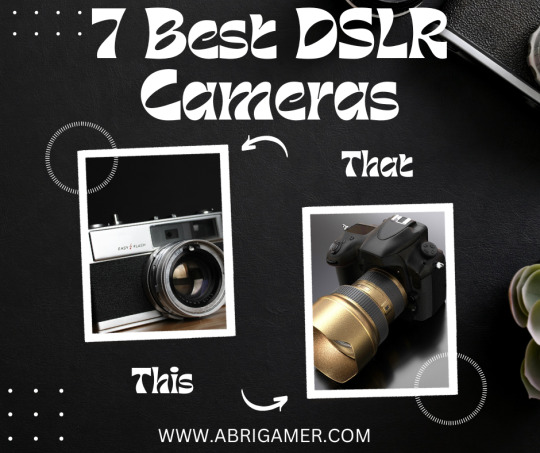
As a professional photographer, you need the right tools to capture stunning images that truly showcase your creativity and skill. One of the most important tools in your arsenal is undoubtedly your camera and a high-quality DSLR camera can make all the difference in the world when it comes to photography. With that in mind, we've put together a list of the 7 best DSLR cameras in India for professional photographers.
Choosing the best DSLR camera for professional photography
Can be a daunting task, especially with so many options available on the market. Here are some factors to consider when making your decision: - Image Quality: Opt for a DSLR camera that offers the highest resolution possible within your budget. The camera should be able to capture crisp, sharp images and have a high dynamic range to capture highlights and shadows in detail. - Autofocus System: Choose a camera that offers a fast, accurate autofocus system with fast processing speed. Look for features such as multiple autofocus points and face detection. - Lens Compatibility: Consider the availability and compatibility of lenses with your camera model. Ensure that the camera can support the lenses you need for your type of photography. - ISO Range: Choose a camera with a high ISO range to allow you to take quality photos even in low-light conditions. - Build Quality: Consider the durability of the camera and ensure that it is built to withstand wear and tear. - User Interface: Look for a camera with a user-friendly interface that is easy to navigate and customize to your preferences. - Price: Make sure you consider your budget when selecting a DSLR camera. You should not overspend unnecessarily but ensure that the camera you choose meets all criteria suitable for your type of photography.
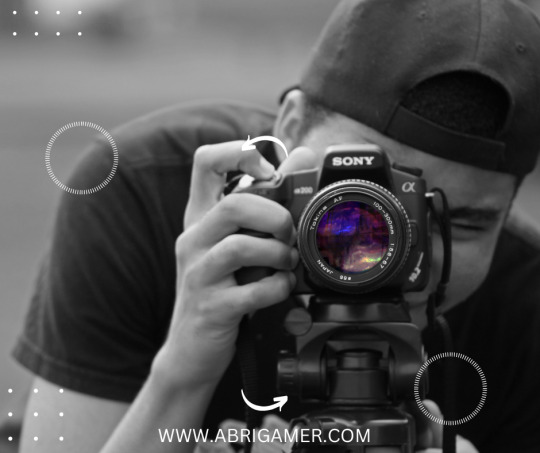
Overall, choosing the best DSLR cameraProfessional photography depends mainly on your personal preferences as a photographer and the type of photography you are interested in pursuing. It is important to choose a camera that is reliable and capable of meeting your professional photography needs. Consider the factors above when choosing a camera to help you make the right decision.
Best DSLR Cameras
Canon EOS 5D Mark IV Nikon D850 Sony Alpha A7R III Fujifilm X-T4 Pentax K-3 Mark III Canon EOS 90D Nikon D3500
Canon EOS 5D Mark IV DSLR camera
This DSLR camera boasts a 30.4-megapixel full-frame CMOS sensor and a 61-point high-density reticular AF system, making it perfect for capturing stunning landscapes and portraits. Check on Amazon
Nikon D850 - With its 45.7 DSLR camera
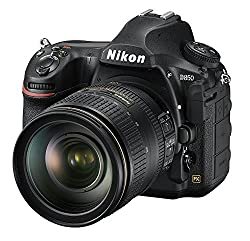
megapixel backside-illuminated sensor, high ISO range, and fast autofocus, the Nikon D850 is a great option for professional photographers who shoot in low-light conditions. Check on Amazon
Sony Alpha A7R III DSLR camera
This mirrorless camera offers a 42.4-megapixel full-frame Exmor R CMOS sensor and a powerful autofocus system, making it an ideal camera for professional photographers who need excellent image quality and speed. Check on Amazon
Fujifilm X-T4 DSLR camera
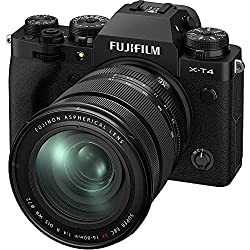
With its 26.1-megapixel X-Trans CMOS 4 sensor and advanced autofocus system, the Fujifilm X-T4 is an excellent choice for photographers who need a reliable and versatile camera for all kinds of shooting scenarios. Check on Amazon
Pentax K-3 Mark III DSLR camera
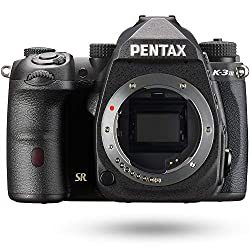
This weather-sealed DSLR camera features a 36.4-megapixel full-frame CMOS sensor and a sophisticated five-axis stabilization system, making it a great option for landscape and wildlife photographers. Check on Amazon
Canon EOS 90D DSLR camera
With its 32.5-megapixel APS-C CMOS sensor and fast autofocus system, the Canon EOS 90D is a great option for professional photographers who need a versatile camera that can handle everything from portraits to sports photography. Check on Amazon
Nikon D3500 DSLR camera
This entry-level DSLR camera offers excellent image quality and ease of use, making it a great option for photographers who are just starting out or need a backup camera for their professional work. Check on Amazon No matter which of these cameras you choose, you can be sure that you're getting a high-quality tool that will help you take your photography to the next level. With the right camera and your unique perspective and creativity, you'll be able to create stunning, memorable images that will stand the test of time. Maintaining your DSLR camera is essential to ensuring its longevity and optimal performance.
Here are some tips to maintain your DSLR camera
- Keep it Clean: Keep your camera and lenses clean by using a microfiber cloth to wipe off dust, dirt, and fingerprints regularly, especially after every use. - Protect the Camera: Use a camera bag or case to protect the camera whenever you're transporting it. This will help prevent scratches and other damage to the camera and lenses. - Use a Screen Protector: Invest in a screen protector to protect the camera's LCD screen from scratches, smudges, and other damage. - Store Properly: When storing your camera, ensure that it is stored in a cool, dry place where it is not exposed to high humidity. Remove the battery to prevent any damage, should it leak, and store it separately. - Regular Servicing: Schedule regular servicing for your camera. It is recommended to have a professional technician clean and service your camera at least once a year or after 20,000 shots. - Avoid Dust: Avoid changing lenses in dusty or dirty environments to prevent dust from getting onto the sensor. Use a cleaning kit designed specifically for DSLR cameras. - Battery: Use only original batteries and their chargers or those approved by the camera manufacturer. Avoid charging them for too long or exposing them to high temperatures. By following these tips, you can ensure your DSLR camera stays in good condition for many years and maintains its optimal performance. Proper maintenance can also protect your investment and allow you to capture the best images possible.
See also
Top Action Cameras in India (May 2023) Top Home CCTV Cameras with Mobile Connectivity for 2023 Security Samsung Galaxy S23 Ultra vs Apple iPhone 14 Pro Max Read the full article
#bestdslrcamera#camera#cameras#canondslrcamera#canondslrcameraprice#dslrcamera#dslrcameraprice#dslrcamerapriceinindia#dslrcameras#featured#nikondslrcamera#secondhanddslrcamera#sonydslrcamera
0 notes
Text
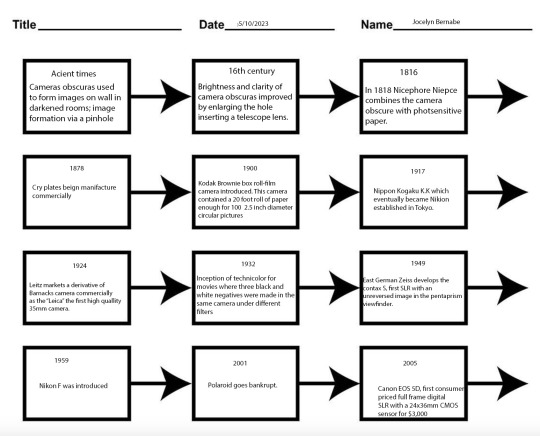
Photography
The first ever camera was made in 16th century by using a box, brightness and clarity with tools like inserting a telescope lens in the hole of the box. These cameras were used by artist and Nicehore Niepce combine this camera and with photosensitive paper. Later on in 1889 the Kodak camera improved with using roll of film instead of paper. These cameras were used until 1917 when the Nippon Kogaku K.K which eventually became Nikon was established in Tokyo. Later on these were models of this camera created like a double twin lens camera and other more better versions.
In 1934 fuji photo film founded by 1938 which made Fuji making camera and lenses in addition with films. In 1972 110-format cameras introduced by Kodak with a 13x17mm frame. Later on in 1949 East German Zeiss develops the Contax S, first SLR with an unreversed image in a pentaprism viewfinder. In 2001 polaroid goes bankrupt and in 2004-2005 Kodak cases production of film cameras and Canon EOS 5D, first consumer-priced full-frame digital SLR, with a 24x36mm CMOS sensor for $3000.
1 note
·
View note